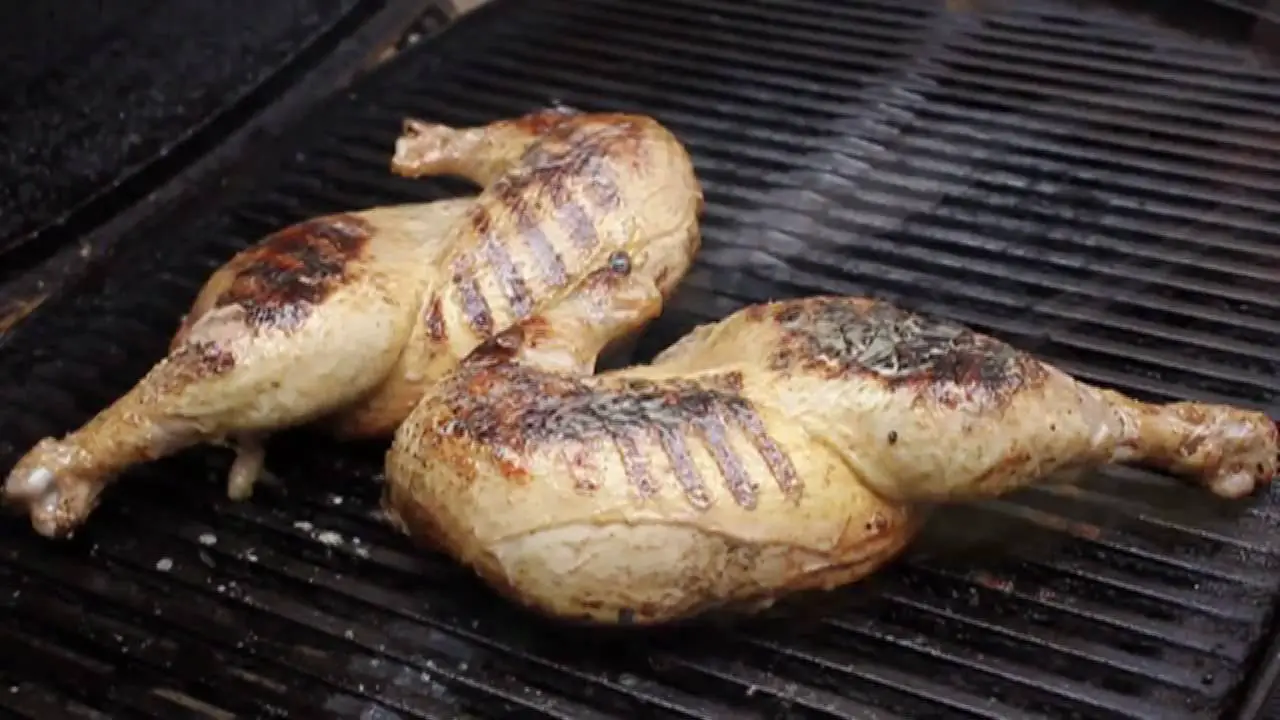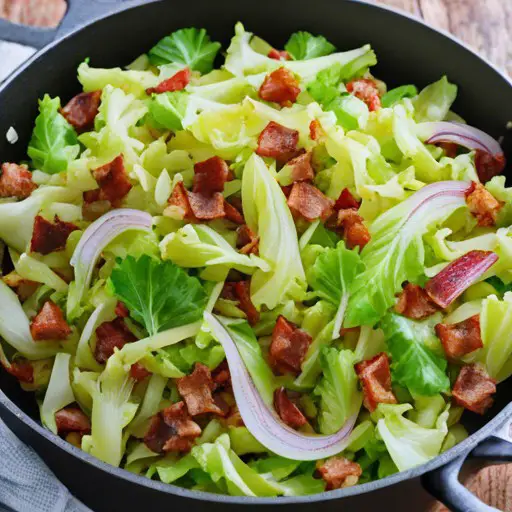Cornell Chicken: A Time-Honored Grilling Tradition
Enter the realm of grilling perfection with Cornell Chicken, a legendary recipe that has stood the test of time. Hailing from the barbecue capital of the world, upstate New York’s Finger Lakes region, this method of preparing chicken is steeped in tradition and flavor. Developed by Dr. Robert C. Baker, a poultry science professor at Cornell University, Cornell Chicken promises a juicy, succulent bird with a tantalizing blend of herbs and spices. In this comprehensive guide, we’ll delve into the art of preparing Cornell Chicken, exploring its origins, ingredients, cooking techniques, and even offering keto and low-carb adaptations.
Ingredients
Meat
- 1 (3 to 3 1/2 pound) broiler-fryer chicken
- 1 tbsp Poultry seasoning
Refrigerated
- 1 Egg, large
Baking & Spices
- 1/2 tsp Black pepper, ground
- 3 tbsp Salt
Oils & Vinegars
- 2 cups Cider vinegar
- 1 cup Vegetable oil
Instructions
1. Prepare the Marinade
- In a bowl, whisk together the cider vinegar, vegetable oil, salt, black pepper, and poultry seasoning. This forms the signature Cornell Chicken marinade.
2. Butterfly the Chicken
- Place the chicken on a cutting board, breast side down. Using kitchen shears or a sharp knife, cut along one side of the backbone. Repeat on the other side to remove the backbone, leaving you with a butterflied chicken.
3. Apply the Marinade
- Generously brush the chicken with the prepared Cornell Chicken marinade, ensuring it penetrates every nook and cranny. Allow the chicken to marinate for at least 30 minutes, or preferably overnight in the refrigerator.
4. Preheat the Grill
- Preheat your grill to medium-high heat, setting it up for indirect grilling.
5. Grill to Perfection
- Place the marinated chicken on the grill, skin side down, over indirect heat. Grill for approximately 20-25 minutes per side, periodically basting with additional marinade. The chicken is done when the internal temperature reaches 165°F (74°C).
6. Rest and Serve
- Allow the grilled Cornell Chicken to rest for a few minutes before carving. Serve it hot, and savor the crispy skin and juicy meat.
Cook Notes
- Marinating Time: For optimal flavor, consider marinating the chicken overnight. This allows the marinade to infuse the meat thoroughly.
- Indirect Grilling: Cornell Chicken is best cooked using indirect heat. This method prevents flare-ups and ensures even cooking without charring the skin.
Variations
Cornell Chicken Drumsticks
Transform the recipe by using chicken drumsticks instead of a whole chicken. This is perfect for casual gatherings or when you’re craving a finger-licking, handheld delight.
Garlic Lover’s Twist
Add minced garlic to the marinade for a garlic-infused Cornell Chicken. This variation enhances the savory notes and provides an aromatic kick.
Keto Versions
Keto-friendly Marinade
Maintain the integrity of the Cornell Chicken marinade while reducing carb content. Use a sugar-free vinegar or reduce the amount, and opt for a keto-friendly oil like olive oil instead of vegetable oil.
Cauliflower “Potato” Salad
Swap the traditional potato salad for a low-carb version using cauliflower. Prepare it with mayonnaise, mustard, and dill for a keto-friendly side dish.
Low Carb Versions
Broccoli “Rice” Pilaf
Replace traditional rice pilaf with finely chopped broccoli sautéed in butter. Season it with salt and pepper for a low-carb alternative that complements Cornell Chicken perfectly.
Lettuce Wrap Cornell Chicken
For a low-carb twist on the classic sandwich, skip the bun and serve Cornell Chicken in crisp lettuce wraps. Add your favorite keto-friendly condiments for extra flavor.
Embracing Tradition and Flavor
In conclusion, Cornell Chicken is more than just a recipe; it’s a culinary journey that embodies tradition, flavor, and the joy of grilling. Developed in the heart of barbecue country, this method has stood the test of time, creating a legacy that continues to delight grill enthusiasts around the world.
Whether you follow the classic recipe, experiment with variations, or embrace keto and low-carb adaptations, Cornell Chicken invites you to savor the essence of great grilling. So, fire up your grill, immerse yourself in the rich flavors of this time-honored recipe, and celebrate the art of outdoor cooking with Cornell Chicken
Grilling Mastery: Unveiling the Secrets of Cornell Chicken
The Legacy of Cornell Chicken
Cornell Chicken, born from the inventive mind of Dr. Robert C. Baker, revolutionized the world of grilling and barbecue. Dr. Baker, a visionary poultry science professor at Cornell University, crafted this recipe as a way to enhance the flavors of chicken and bring joy to backyard cookouts. The marriage of cider vinegar, vegetable oil, and a carefully curated blend of seasonings creates a marinade that elevates poultry to new heights. The legacy of Cornell Chicken lives on, passed down through generations as a quintessential grilling experience.
The Art of Butterflying
The butterflying technique used in preparing Cornell Chicken is an essential step that contributes to both the flavor and cooking efficiency of the dish. By removing the backbone and spreading the chicken flat, you create a larger surface area for the marinade to penetrate. Additionally, the flattened shape ensures even cooking and allows the skin to crisp up beautifully on the grill.
Perfecting the Marinade
The Cornell Chicken marinade is the heart of this recipe, infusing the poultry with layers of flavor. The marriage of cider vinegar and vegetable oil not only tenderizes the meat but also imparts a tangy and succulent quality. Poultry seasoning, black pepper, and salt bring a harmonious balance that complements the natural taste of the chicken. The marinade acts as both a flavor enhancer and a tenderizer, resulting in a perfectly seasoned and juicy end product.
Grilling Techniques for Success
To truly master Cornell Chicken, understanding grilling techniques is paramount. Indirect grilling is the key to achieving that crispy skin and succulent meat without the risk of flare-ups. This method involves cooking the chicken away from the direct heat source, allowing it to roast slowly, absorbing the smoky essence of the grill. Regular basting during grilling not only enhances flavor but also ensures that the chicken remains moist and flavorful.
The Importance of Resting
Once the Cornell Chicken is grilled to perfection, resist the temptation to dive in immediately. Allowing the meat to rest for a few minutes post-grilling is a crucial step. During this time, the juices redistribute, ensuring a juicy and flavorful bite with every slice. Patience at this stage contributes significantly to the overall dining experience.
Cornell Chicken: Adapting to Dietary Preferences
Keto-friendly Transformations
For those adhering to a ketogenic lifestyle, making Cornell Chicken keto-friendly is both feasible and delicious. By opting for sugar-free vinegar, using keto-approved oils, and ensuring the poultry seasoning is free from added sugars, you can maintain the integrity of the recipe while keeping the carb count low. Pair it with keto-friendly sides, such as cauliflower rice or broccoli salad, for a complete and satisfying meal.
Low-Carb Explorations
Low-carb adaptations of Cornell Chicken open up a world of creative possibilities. Consider using lettuce wraps instead of buns, or swapping out traditional side dishes with low-carb alternatives like zucchini noodles or grilled vegetables. These variations cater to dietary preferences without sacrificing the essence of Cornell Chicken.
Cornell Chicken: A Culinary Tradition Lives On
In conclusion, Cornell Chicken is more than a recipe; it’s a culinary tradition that honors the art of grilling. From its origins at Cornell University to its widespread popularity, this dish encapsulates the spirit of outdoor cooking. Whether you’re a grilling novice or a seasoned pitmaster, Cornell Chicken invites you to partake in a timeless tradition that celebrates flavor, technique, and the joy of sharing a delicious meal.
So, embrace the legacy, experiment with variations, and savor the rich flavors of Cornell Chicken. As the grill sizzles and the aroma fills the air, you’re not just cooking a meal; you’re continuing a tradition that spans generations. Happy grilling, and may your Cornell Chicken always be a triumph on the grill!





